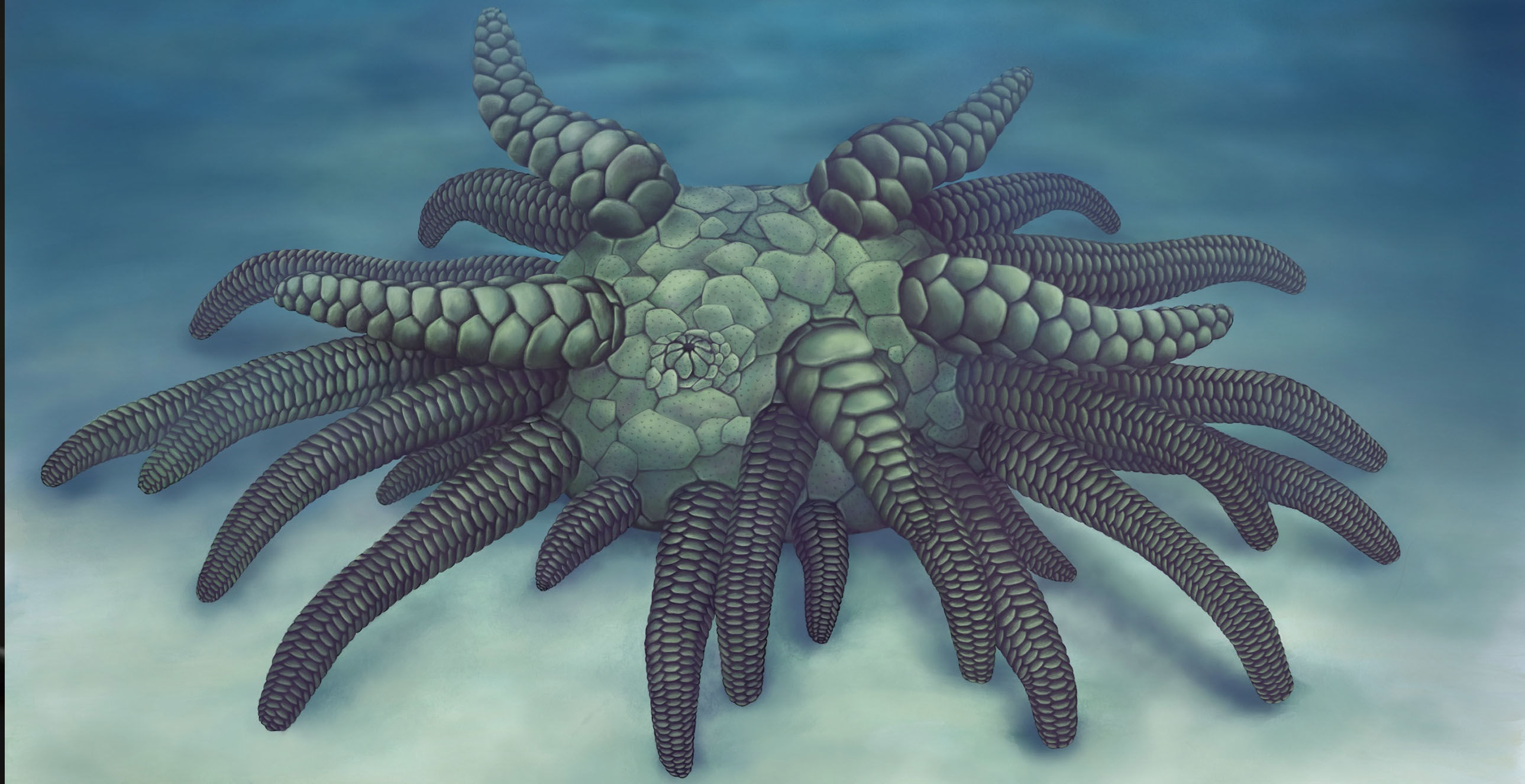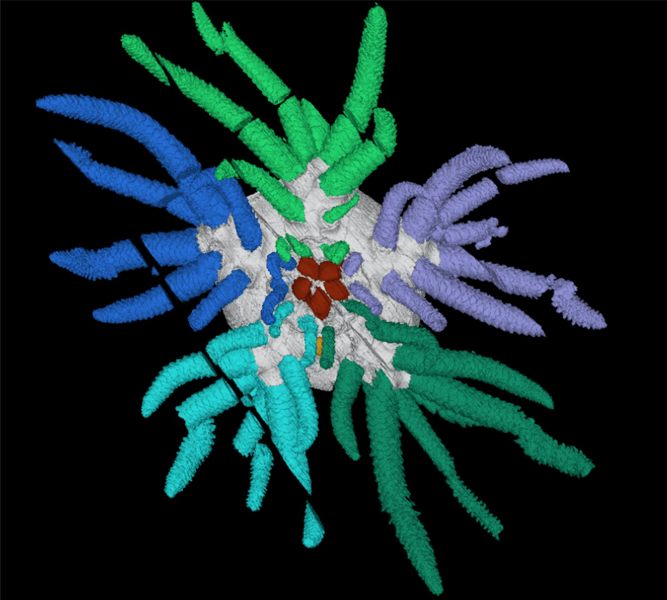Create a free profile to get unlimited access to exclusive videos, sweepstakes, and more!
Another prehistoric Lovecraftian sea creature has (appropriately) been named after Cthulhu

Ph'nglui mglw'nafh Cthulhu R'lyeh wgah'nagl fhtagn. Even though it wasn’t in a massive submerged palace at R’lyeh, dead Cthulhu was waiting—waiting to be discovered.
Maybe someone called him, or he telepathically communicated with the scientists from Yale University, Oxford University, USC, Imperial College London and the University of Leicester to rediscover a strange fossil that had first been unearthed in the early 2000s but never really identified. It turned out to be a creature that scuttled across the seafloor (maybe in R’lyeh?) on it tentacles 430 million years ago until it was forever buried in volcanic ash.
Tentacles. No wonder this prehistoric relative of the sea cucumber was named Sollasina cthulhu.
H.P. Lovecraft fan and team lead Iman Rahman just had to name a thing with 45 tentacles after a ginormous fictional monster from the deep whose face is writhing with them. Sollasina cthulhu was only the size of a large spider and not nearly as dangerous a Lovecraft’s behemoth, unless you were algae one of the tiny invertebrates it shoved into its beak as it crawled across the Silurian seas. That is an improvement over a beast that wants to take over the planet, maybe the universe, and will eat things like, you know, you.
“There’s this idea of having lots of tentacle-like appendages covering the body. It’s just something that resonated with me,” Rahman, whose study was recently published in Proceedings of the Royal Society B, said. “[The name] really was from my own geekiness, I suppose.”
Because X-rays have no way of telling the difference between a fossil and the rock it is embedded in, the research team had no choice but to grind the fossil into slices only 30 microns thick and image it in detail with high-resolution physical-optical tomography. This method spawned the “virtual fossil” you see above.
If all the creepy appendages, which are colored in, kind of look like king crab legs, they do have an exoskeleton. This is what distinguishes Sollasina cthluhu as belonging to an extinct class of marine animals called ophiocistioids. These creatures are a type of echinoderm—think starfish and sea urchins—and the research team found that aspects of S.cthulhu’s water vascular system differed from anything they had ever seen in an ophiocistioid. By the way, this Cthuloid is most closely related to sea cucumbers, which are just as freaky.
“[It] provides evidence of the ancestry of this group and shows that the evolution of sea cucumbers involved the reduction of the skeleton over time,” Rahman explained.
Unfortunately, the fossil ended up being a victim of science, but at least the digital image will set a precedent for any other Sollasina cthulhu specimens that may show up in the future, if we don’t find R’lyeh first.
(via Yale University)



























